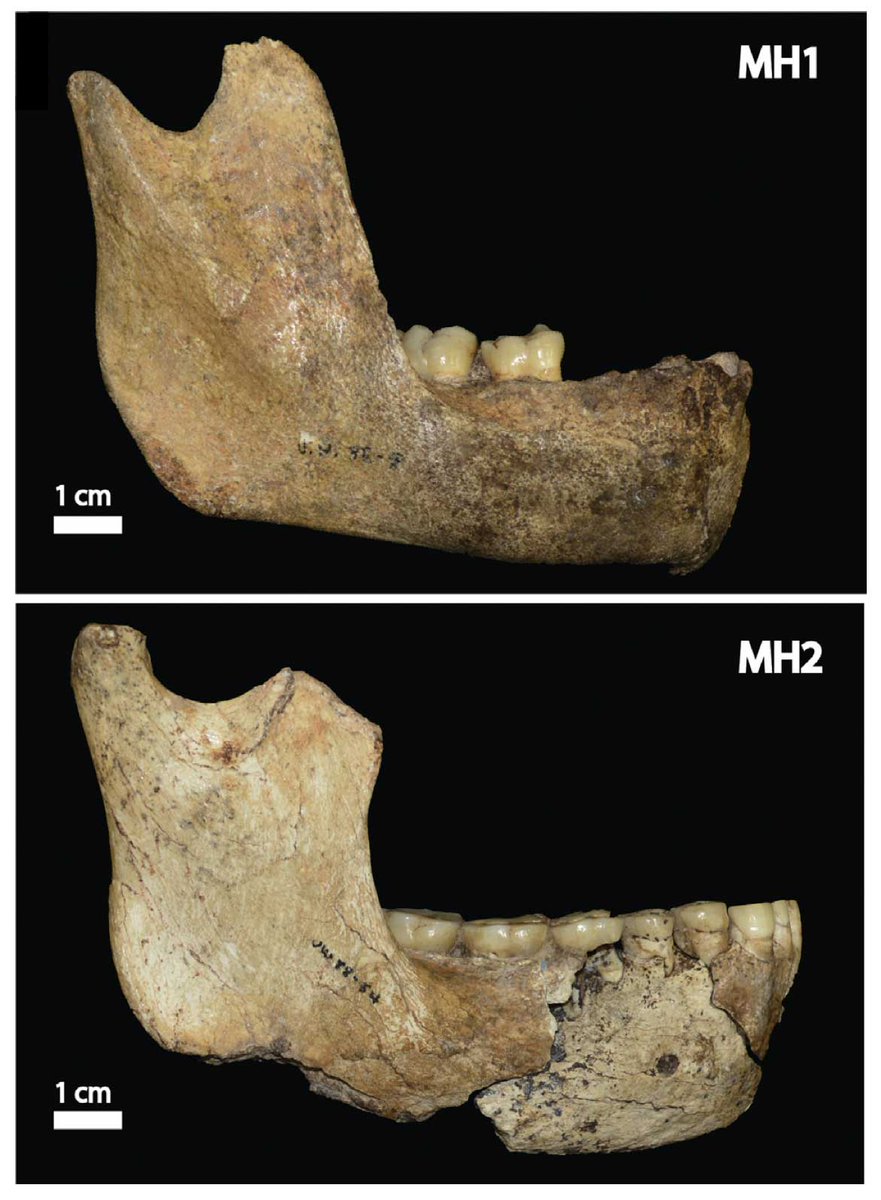
"A new dating program using the isochron method for burial dating has established an absolute age of 2.22 ± 0.09 Ma for a large portion of the Lower Bank, containing the earliest Oldowan stone tools and fossils of Paranthropus robustus in South Africa." doi.org/10.1016/j.jhev… 

If this date is accurate, it places a good Oldowan assemblage into a temporal context where it's not clear Homo was present at all. These are Paranthropus or Australopithecus tools. 

Only 2 fossils from Swartkrans Lower Bank can be excluded from Paranthropus: an isolated molar fragment and a juvenile mandible fragment, SKX 21204. The unerupted premolars of this otherwise super fragmented specimen are interesting. 

Thomas Davies and coworkers examined enamel-dentin junction morphology in #Homonaledi and other #hominin premolars. SKX 21204 P3 morphology maps near Au. africanus and H. erectus doi.org/10.1038/s41598… 

The P4 morphology puts SKX 21204 into H. erectus. If this tooth is enough evidence, this would be the earliest H. erectus individual known in the fossil record, 250,000 years earlier than the Drimolen DNH 134 fossil. 

Notice however that Au. sediba is not sampled in the EDJ morphology paper. All of the Swartkrans assignments to "Homo" predate the discovery of Au. sediba, and we have to re-evaluate these attributions in light of Au. sediba's Homo-like dental and mandibular morphology. 

Most of the well-known hominins from Swartkrans Member 1 come from the unit known as the "Hanging Remnant". The age of this is more than 1.8 million years based on an overlying flowstone, but it is stratigraphically younger than the Lower Bank material.
Understanding the age of the Hanging Remnant fossils still continues: "We are working to retrieve clasts from the HR in order to date the younger part of the Member 1 talus more precisely." doi.org/10.1016/j.jhev…
These results from Swartkrans show that Drimolen Main Quarry is not the earliest P. robustus, and any differences among Swartkrans, Kromdraai, and DMQ are not simple evolution over time. doi.org/10.1038/s41559…
• • •
Missing some Tweet in this thread? You can try to
force a refresh









